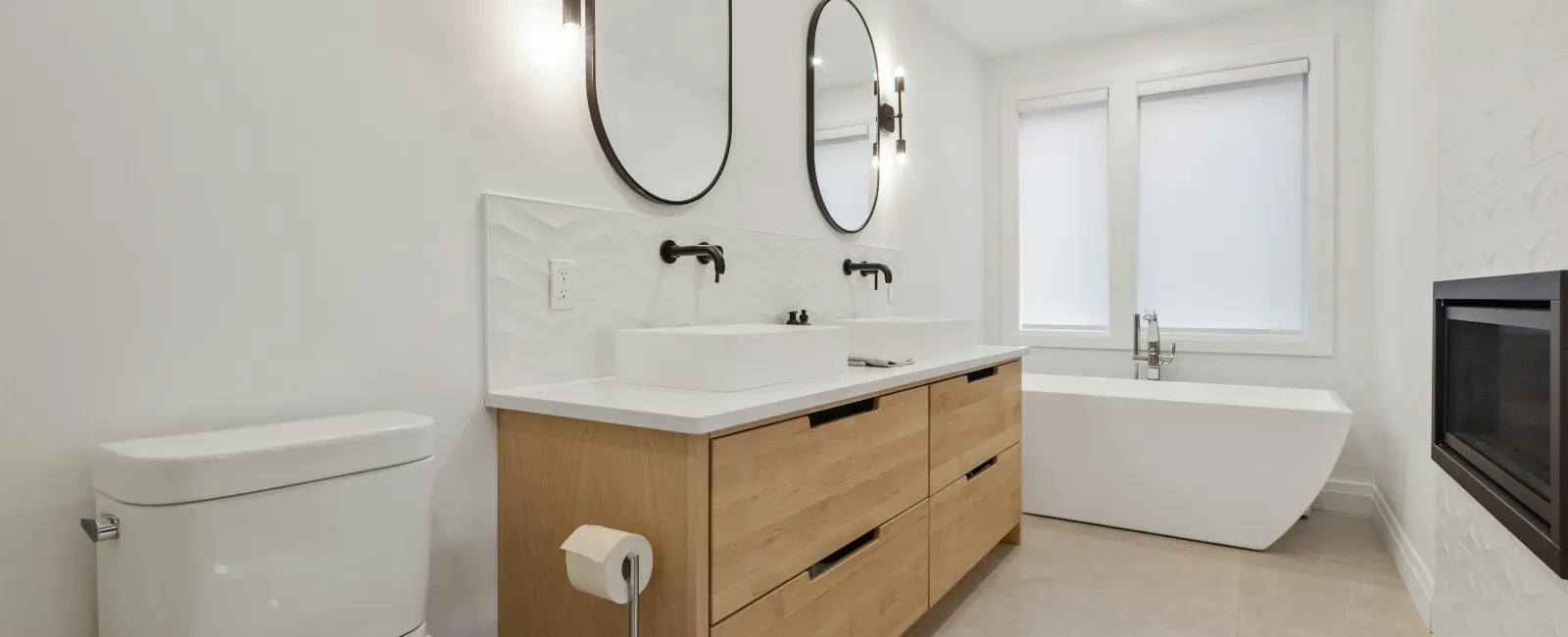After each flush, a toilet fill valve refills the tank with water, ensuring the toilet is ready for subsequent use. Located inside the toilet tank, it opens and closes based on the water level, which is regulated by a float mechanism. As the water level drops during a flush, the float opens the valve, allowing water to flow in. The float rises once the tank is full, shutting off the valve to prevent overflow. This simple yet essential mechanism keeps your toilet functioning efficiently.
What Is a Toilet Fill Valve?
The toilet fill valve is a vital part of your toilet's internal plumbing system. Located inside the toilet tank, its primary role is to replenish the tank with water after each flush. This valve is connected directly to the water supply pipe from below, ensuring a steady flow of water into the tank.
Additionally, the water supply line is linked to a toilet water valve, which controls the overall water flow to the toilet. This shut-off valve is typically a knob located on the wall behind the toilet tank, allowing you to manage the water supply when repairs or maintenance are needed.
Key Components of the Toilet Fill Valve System
Toilet Float
Attached to the toilet fill valve is a toilet float, which plays a crucial role in regulating the water level within the tank. The float moves up and down with the water level, controlling the opening and closing of the fill valve. There are two main types of floats:
Float Ball: Common in older toilet models, this is a round ball connected to a float arm that links to the fill valve.
Float Cup: More prevalent in modern toilets, this smaller float moves vertically to control the fill valve.
Understanding the type of float your toilet uses is essential for any necessary toilet float replacement or adjustments.
Overflow Tube
The overflow tube is a large tube in the center of the tank that directs excess water into the bowl, preventing the tank from overflowing. It also works with the refill tube, which sends a small stream of water into the bowl to maintain the water barrier, blocking sewer gases from entering the bathroom.
How Does a Toilet Fill Valve Work?
Understanding the operation of the toilet fill valve can help you identify and fix common toilet issues. Here's a step-by-step breakdown:
Tank Full: The tank is full before flushing, and the toilet fill valve is closed. The toilet float sits at the top of the tank, keeping the valve shut.
Flushing: When you press the flush lever, a chain lifts the toilet flapper, allowing water to rush out of the tank and into the bowl.
Flapper Returns: After the flush, the flapper closes, and the tank begins to empty.
Float Drops: As the water level drops, the toilet float descends, triggering the toilet fill valve to open.
Tank Refills: Water flows into the tank through the fill valve. As the water level rises, the float rises with it.
Valve Closes: Once the float reaches the preset height, it signals the fill valve to shut off, stopping the water flow.
Refill Tube Activation: Simultaneously, the refill tube directs a small amount of water into the bowl via the overflow tube to maintain the water barrier.
Common Issues with Toilet Fill Valves
Despite their reliability, toilet fill valves can develop problems over time. Recognizing these issues early can save you from more significant plumbing headaches.
No Water in Toilet Tank
If you find that there's no water in your toilet tank, the issue likely lies with the toilet water valve or the fill valve itself. One possible cause is that the shut-off valve behind the toilet is closed, so it's important to ensure that this valve is fully open. Another reason could be a clogged fill valve, where mineral deposits block the valve and prevent water from flowing into the tank. Additionally, a broken float may be malfunctioning, failing to signal the fill valve to open and allow water to refill the tank.
Running Toilet
A constantly running toilet often points to a faulty fill valve. This issue can arise from worn-out valve components, as over time, the parts within the fill valve can degrade and cause leaks. Improper float adjustment is another common cause; if the float is set too high, it allows water to continuously flow into the overflow tube. Furthermore, a leaking flapper can contribute to the problem, as a damaged flapper prevents the tank from sealing properly, forcing the fill valve to work overtime to maintain the water level.
Noisy Fill Valve
Unusual noises, such as hissing or buzzing, emanating from the fill valve indicate a problem. These sounds can result from air being trapped in the valve, which causes hissing noises as water flows through. Loose or worn parts within the fill valve can also lead to rattling or buzzing sounds, as metal components become compromised. Additionally, water flow issues, such as inconsistent water flow, can create strange noises when the valve struggles to regulate the water entering the tank.
When to Replace or Repair Your Toilet Fill Valve
Knowing when to replace or repair your toilet fill valve can save you from persistent toilet issues. Here are signs it's time for action:
Persistent Running
If your toilet continues to run despite attempting to adjust the float, the fill valve may need replacement.
Visible Leaks
Water leaking from the supply line coupling or other parts of the fill valve indicates that the valve is compromised and should be replaced.
Inefficient Refilling
If the tank refills too slowly or not at all, the fill valve may be clogged or broken, necessitating a replacement.
Old Technology
Older fill valves may not function as efficiently as newer models. Upgrading to a modern fill valve can improve performance and reduce water usage.
How to Replace a Toilet Fill Valve
Replacing a toilet fill valve is a manageable DIY task. Here's a simplified guide:
Turn Off the Water Supply: Locate the shut-off valve behind the toilet and turn it clockwise to stop water flow.
Drain the Tank: Flush the toilet to empty the tank. Use a sponge to remove any remaining water.
Remove the Old Fill Valve: Disconnect the water supply line and unscrew the old fill valve from the tank.
Install the New Fill Valve: Follow the manufacturer's instructions to install the new valve, ensuring it's securely fitted.
Reconnect the Supply Line: Attach the water supply line to the new fill valve.
Adjust the Float: Set the float to the appropriate level to ensure the tank fills correctly without overflowing.
Turn On the Water Supply: Slowly turn the shut-off valve back on and allow the tank to fill.
Test the Toilet: Flush the toilet to ensure the new fill valve operates smoothly and there are no leaks.
Importance of Proper Fill Valve Maintenance
Maintaining your toilet fill valve ensures your toilet remains efficient and prevents unnecessary water wastage. Regular inspections can help you spot issues early, allowing for timely toilet float replacement or valve adjustments.
Contact Us for Expert Toilet Repair
If you're experiencing issues with your toilet fill valve, such as no water in toilet tank or a constantly running toilet, don't hesitate to reach out for professional help. At Dalmatian Plumbing, we specialize in toilet fill valve repairs, replacements, and maintenance services in Norcross and the surrounding areas. Our expert technicians are here to ensure your toilet functions flawlessly. Additionally, we offer comprehensive heating and air conditioning services to keep your home comfortable year-round.
Call us today to schedule an appointment and let us take care of all your plumbing needs!


